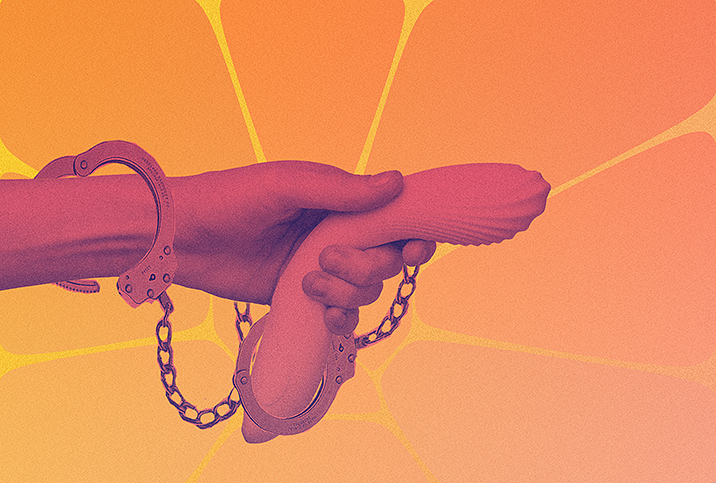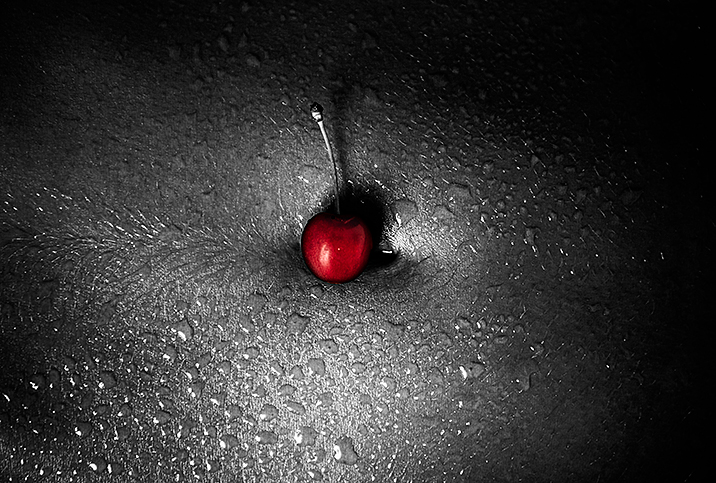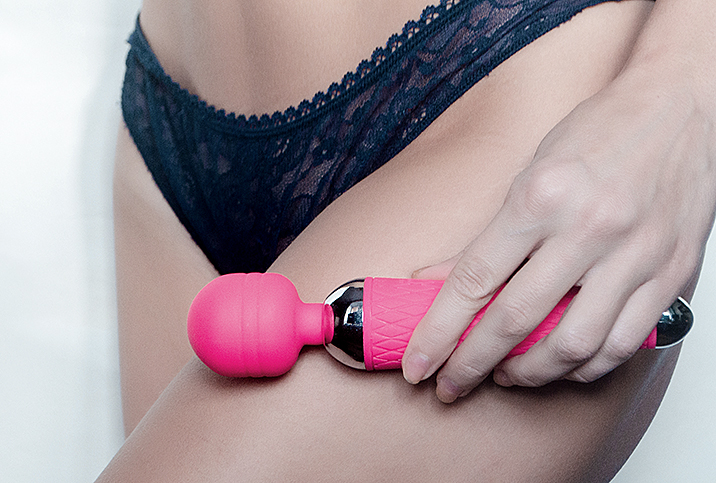A Brief History of Sex Toys

We tend to think of sex toys as a recent invention of the modern, open-minded world. However, recent findings have suggested that our species has been playing with sex toys for longer than we thought.
The recent study has left us wondering—just how far back does the sex toy go?
How have sex toys (and our attitudes) changed over the years?
The history of sex toys is intricately wound up with the history of social attitudes toward sex and pleasure.
As early as 29,000 BC, Neanderthals living in the Swabian Jura region of present-day Germany began sculpting rocks into penis shapes. The earliest known stone phallus, thought to be around 28,000 years old, was around eight inches long and one inch wide. Its true-to-life size suggested to some researchers that it might've been used as a sex toy.
Fast-forward a few thousand years to ancient Greece, when legend has it that men left their wives with olisboi—phalluses made of leather—to prevent hysteria when they went off to war for long stretches.
In 1992, a 2,000-year-old wooden phallus was found in a ditch in modern-day Britain. Experts believe that the phallus could be an early example of a sex toy from the Roman world.
"While we can be reasonably certain that sex tech has been around far into prehistory, there is a disparity between the presence of sex toys in the written record of the ancient world and the relative absence of sex toys in the collections of artifacts in museums," said Nate Morris, co-author of "Transforming Orgasms with Psychedelics, Cannabis & Science."
According to Morris, many ancient sex toys might have been destroyed at various points in history.
"There have long been allegations that the Catholic Church, and other religious groups, destroyed historical artifacts deemed sexually graphic in nature," said Morris. "However, the veracity of these claims is a matter of debate, and there is little conclusive evidence to support them."
Morris adds that there is evidence that various groups in history have destroyed other sexual artifacts.
"In addition to religious groups, monarchies and governments have also been known to destroy or censor sexually explicit artifacts," he said.
He pointed out the destruction of art and literature during the reign of the Ottoman Empire in the 16th century. Anything deemed "obscene or blasphemous" was destroyed.
When did modern sex toys appear?
It wasn't until the 19th and 20th centuries that sex toys began to develop. As Michael Allmond, vice president and co-founder of sex toy retailer Lover's Lane, said, "The vast majority of the toys prior to this period were phallic objects that would look more or less like a penis, depending on the creator."
The vibrator, as we know it, arrived on the scene in the early 1900s. There are a few stories about the invention of vibrators. According to Lisa Lawless, Ph.D., certified by the American Association of Sexuality Educators, Counselors and Therapists (AASECT), sex educator and founder of Holistic Wisdom, the idea that doctors initially created vibrators to stimulate women sexually to treat hysteria is a myth.
"In [Rachel Maine's 1999 book "Technology of Orgasm"], she claimed that doctors invented them to treat hysteria in women," Lawless says. "However, historically, doctors never used vibrators to stimulate women sexually; in fact, it was highly discouraged."
Lawless stated that vibrators were initially used on other areas of the body to "cure all kinds of ailments, from helping to reduce wrinkles to treating tuberculosis."
Take, for instance, the electric vibrator. It was invented by Joseph Mortimer Granville, a British physician and patented in 1902 by Hamilton Beach. It was advertised as a general health tool.
The same thing occurred with butt plugs, originally called "rectal dilators," which were patented by Frank E. Young in 1892. Their intended usage was for treating hemorrhoids and constipation. Later, in the 1940s, butt plugs were marketed as headache relievers.
But by the 1920s, vibrators had already begun to be associated with sex.
"This shift in perception started to make them feel more taboo to mainstream society due to its association with sexual pleasure," Lawless said.
How did sex toys change in the 1960s and 1970s?
Another major shift in sex toy history came in the 1960s when silicone took over from rubber across the industry.
"This is a huge development in sexual health, as toys made with rubber would melt when washed with hot water to sanitize them," noted Allmond. "This caused many to not clean their toys properly, which led to the spread of STIs [sexually transmitted infections]."
"At that time, dildos were typically made with very low-quality materials. This was primarily because they were illegal under the Comstock Law, a century-old federal anti-obscenity law that barred sending sex devices through the mail.
Furthermore, companies would call them 'marital aids' to avoid federal obscenity laws that nearly every state had regarding sex toys," said Lawless.
Things began to shift in the 1970s when sex toy manufacturers and public sex toy shops launched. The sales of sex toys became less hush-hush. The 2022 global sex toys market was valued at 32.7 billion.
Since then, sex toys have slowly become mainstream and more widely accepted as a regular part of sex, except for a few incidents here and there.
Have sex toys ever been banned in modern times?
In the 1990s, several states banned sex toys.
"These are primarily passed in the conservative southern states like Georgia and Alabama," said Allmond. However the ban was overturned in the 2003 Lawrence v. Texas United States Supreme Court decision.
In the early 2000s, remote-controlled vibrators and app-controlled vibrators were launched, further transforming the industry.
One of the most recent shifts is a wider acceptance of more experimental sex toys.
As Lawless said, "The Fifty Shades books and movies brought what were often considered more fringe sex toys like anal beads, nipple toys, BDSM and roleplay gear into the mainstream and created greater acceptance of sexual stimulation in more diverse ways."
The bottom line
Gone are the days of the inches-long wooden phallus. Today's consumer has a wide variety of innovative products. There's no doubt that over the next few decades, sex toys and our relationship with them will continue to shift and change alongside the growing sex-positive movement and doing (consensually) what feels good.


















